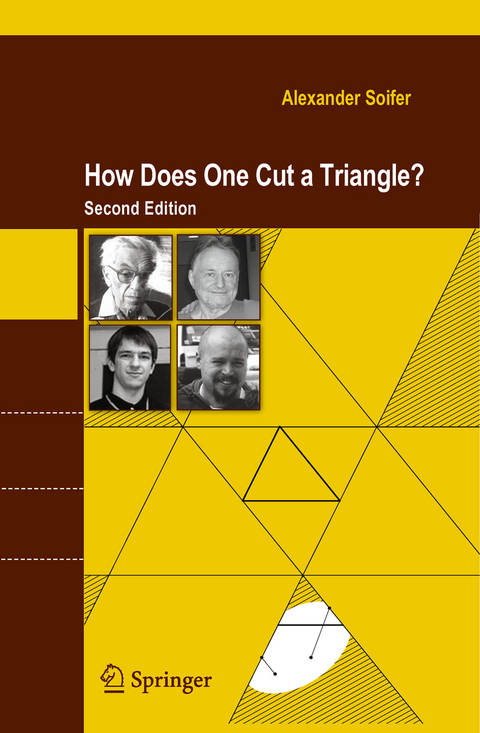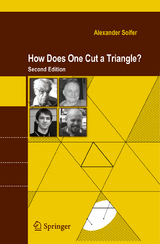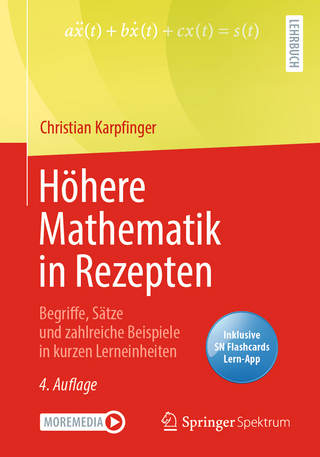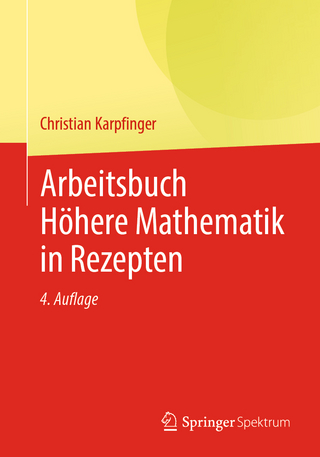How Does One Cut a Triangle?
Seiten
2009
|
2nd ed. 2009
Springer-Verlag New York Inc.
978-0-387-74650-0 (ISBN)
Springer-Verlag New York Inc.
978-0-387-74650-0 (ISBN)
This second edition of Alexander Soifer’s How Does One Cut a Triangle? demonstrates how different areas of mathematics can be juxtaposed in the solution of a given problem. The author employs geometry, algebra, trigonometry, linear algebra, and rings to develop a miniature model of mathematical research.
How Does One Cut a Triangle? contains dozens of proofs and counterexamples to a variety of problems, such as a pool table problem, a fifty-dollar problem, a five-point problem, and a joint problem. By proving these examples, the author demonstrates that research is a collection of mathematical ideas that have been developed throughout the course of history.
The author brings mathematics alive by giving the reader a taste of what mathematicians do. His book presents open problems that invite the reader to play the role of the mathematician. By doing so, the author skillfully inspires the discovery of uncharted solutions using his solutions as a guide.
How Does One Cut a Triangle? contains dozens of proofs and counterexamples to a variety of problems, such as a pool table problem, a fifty-dollar problem, a five-point problem, and a joint problem. By proving these examples, the author demonstrates that research is a collection of mathematical ideas that have been developed throughout the course of history.
The author brings mathematics alive by giving the reader a taste of what mathematicians do. His book presents open problems that invite the reader to play the role of the mathematician. By doing so, the author skillfully inspires the discovery of uncharted solutions using his solutions as a guide.
The Original Book.- A Pool Table, Irrational Numbers, and Integral Independence.- How Does One Cut a Triangle? I.- Excursions in Algebra.- How Does One Cut a Triangle? II.- Excursion in Trigonometry.- Is There Anything Beyond the Solution?.- Pursuit of the Best Result.- Convex Figures and the Function S().- Paul Erd#x0151;s: Our Joint Problems.- Convex Figures and Erd#x0151;os#x2019; Function S().- Developments of the Subsequent 20 Years.- An Alternative Proof of Grand Problem II.- Mikl#x00F3;s Laczkovich on Cutting Triangles.- Matthew Kahle on the Five-Point Problem.- Soifer#x2019;s One-Hundred-Dollar Problem and Mitya Karabash.- Coffee Hour and the Conway#x2013;Soifer Cover-Up.- Farewell to the Reader.
| Zusatzinfo | 83 Illustrations, black and white; XXX, 174 p. 83 illus. |
|---|---|
| Verlagsort | New York, NY |
| Sprache | englisch |
| Maße | 155 x 235 mm |
| Themenwelt | Mathematik / Informatik ► Mathematik ► Algebra |
| Mathematik / Informatik ► Mathematik ► Geometrie / Topologie | |
| Mathematik / Informatik ► Mathematik ► Graphentheorie | |
| ISBN-10 | 0-387-74650-1 / 0387746501 |
| ISBN-13 | 978-0-387-74650-0 / 9780387746500 |
| Zustand | Neuware |
| Informationen gemäß Produktsicherheitsverordnung (GPSR) | |
| Haben Sie eine Frage zum Produkt? |
Mehr entdecken
aus dem Bereich
aus dem Bereich
Mathematik von Studierenden für Studierende erklärt und kommentiert
Buch | Softcover (2024)
Springer Spektrum (Verlag)
34,99 €
Begriffe, Sätze und zahlreiche Beispiele in kurzen Lerneinheiten
Buch | Softcover (2022)
Springer Spektrum (Verlag)
54,99 €
Buch | Softcover (2022)
Springer Spektrum (Verlag)
39,99 €




